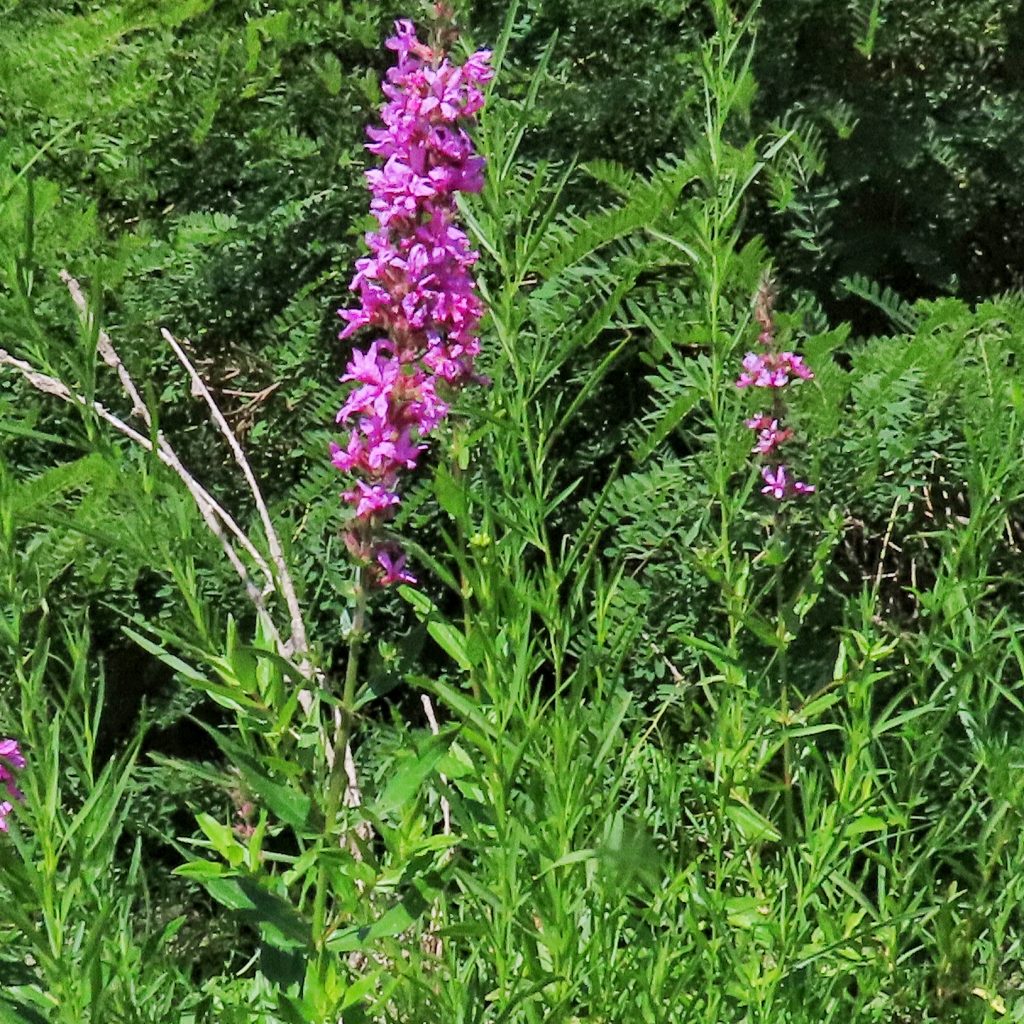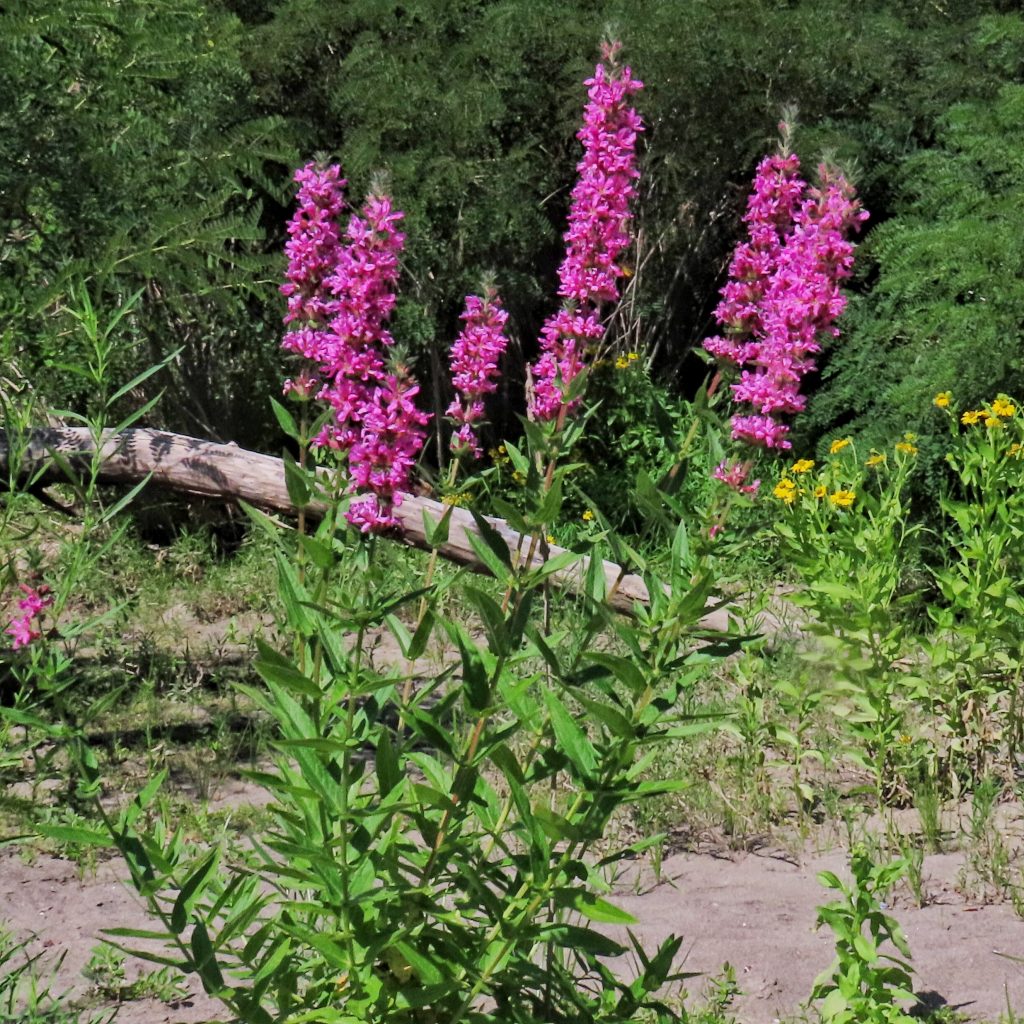
This is a wildly invasive European native which had become established in North America by the 1830s, both as a result of ornamental plantings and due to seeds being expelled in ships ballasts. It was first found naturalized in the PNW in the early 1900s. Another factor in the spread of this plant is that it was widely planted by beekeepers because it is an excellent nectar source. I can attest to its attractiveness to European Honey Bees (Apis mellifera), which were nectaring at these plants in large numbers when I was there on Labor Day, although they were the only insects I observed feeding on it.
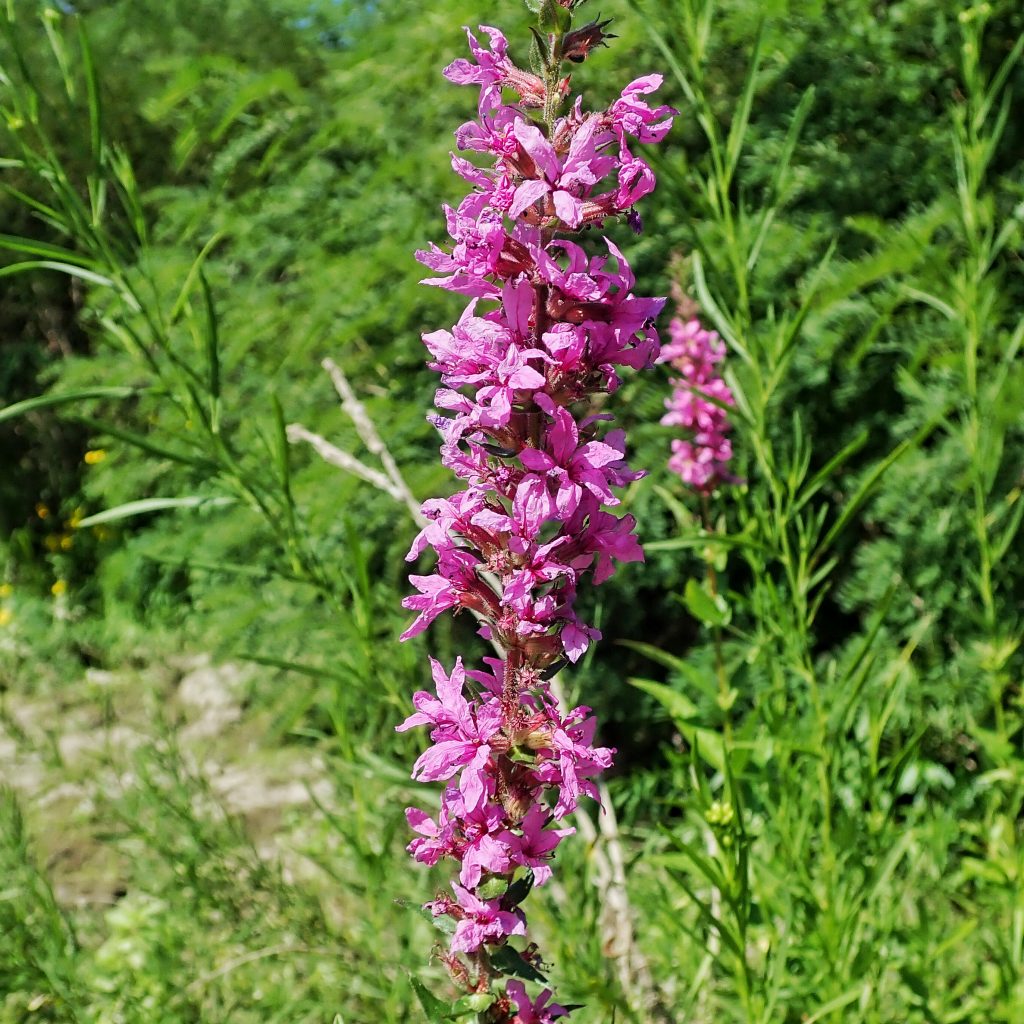
The deleterious effects of Lythrum salicaria are manifold. With seed production in the millions for a single plant, it crowds out the native plant species, and thus displaces the waterfowl, mammals and insects dependent on those species for food, shelter, and nesting materials. The seeds can germinate in standing water, producing a root system which traps sediment, reducing the aquatic area and altering the hydrology of the wetlands, which causes the wetland to dry out much earlier in the year. And, from a recreational standpoint, they choke the channels and shorelines, greatly reducing access to marshes and other wetlands.
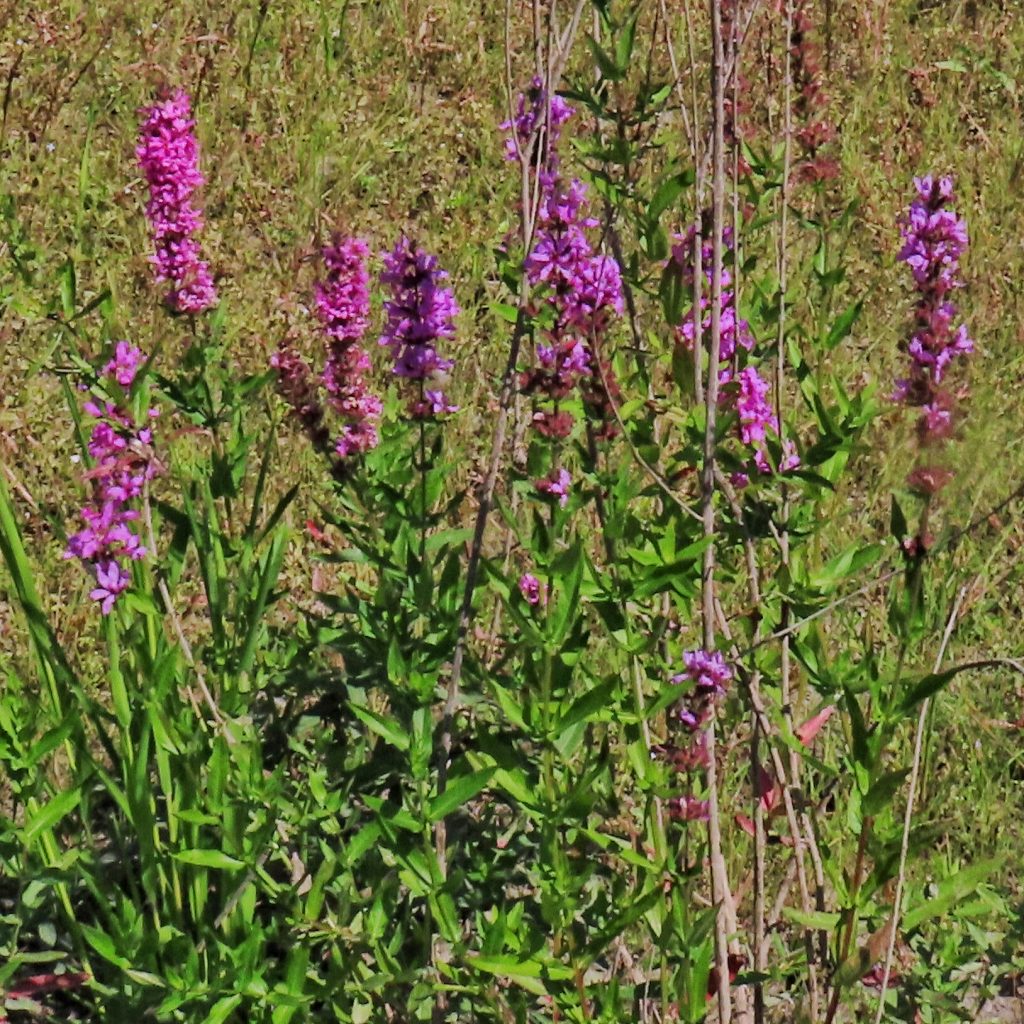
In spite of its invasive nature and unwelcome status, stands of Purple Loosestrife can be spectacularly beautiful. It grows in tall, often dense clumps, and the stems are covered in gray hairs. The leaves are long, lanceolate, hairy, and clasping. The purple flowers are in a dense spike atop the stem, have 5-7 wrinkled, 1/2” long petals,12 stamens, and bloom all summer long. It has naturalized throughout our region, except for alpine areas and the most arid parts of Oregon.
Two species of Chrysomelidae (leaf beetles) have been introduced as biocontrol agents to combat Purple Loosestrife. Neogalerucella calmariensis (Black-margined Loosestrife Beetle) and Neogalerucella pusilla adults feed on the new leaves and shoots of this species, and their larvae eat the leaves, buds, and stems.

Lythrum salicaria is considered to be such a problem that two weevils (Curculionidae) have also been introduced to combat it. Hylobius transversovittatus adults feed on leaves of Purple Loosestrife, but their impact is minimal. It is their larvae which do the real damage, eating the hairs on the roots and then consuming the roots themselves, actions which can ultimately kill the plant. Nanophyes marmoratus (Loosestrife Flower Weevil) adults and larvae both feed on the flowers of this plant, which can cut seed production by up to 60%.
The combination of these 4 European imports has been found to be very effective at limiting the spread of this species, and even eliminating its gains.
Though their are several other holarctic insects (most notably Ectropis crepuscularia [Small Engrailed Moth] larvae) which have been known to feed on Purple Loosestrife in its native habitats, nothing native to North America seems to target this species for anything besides nectar.
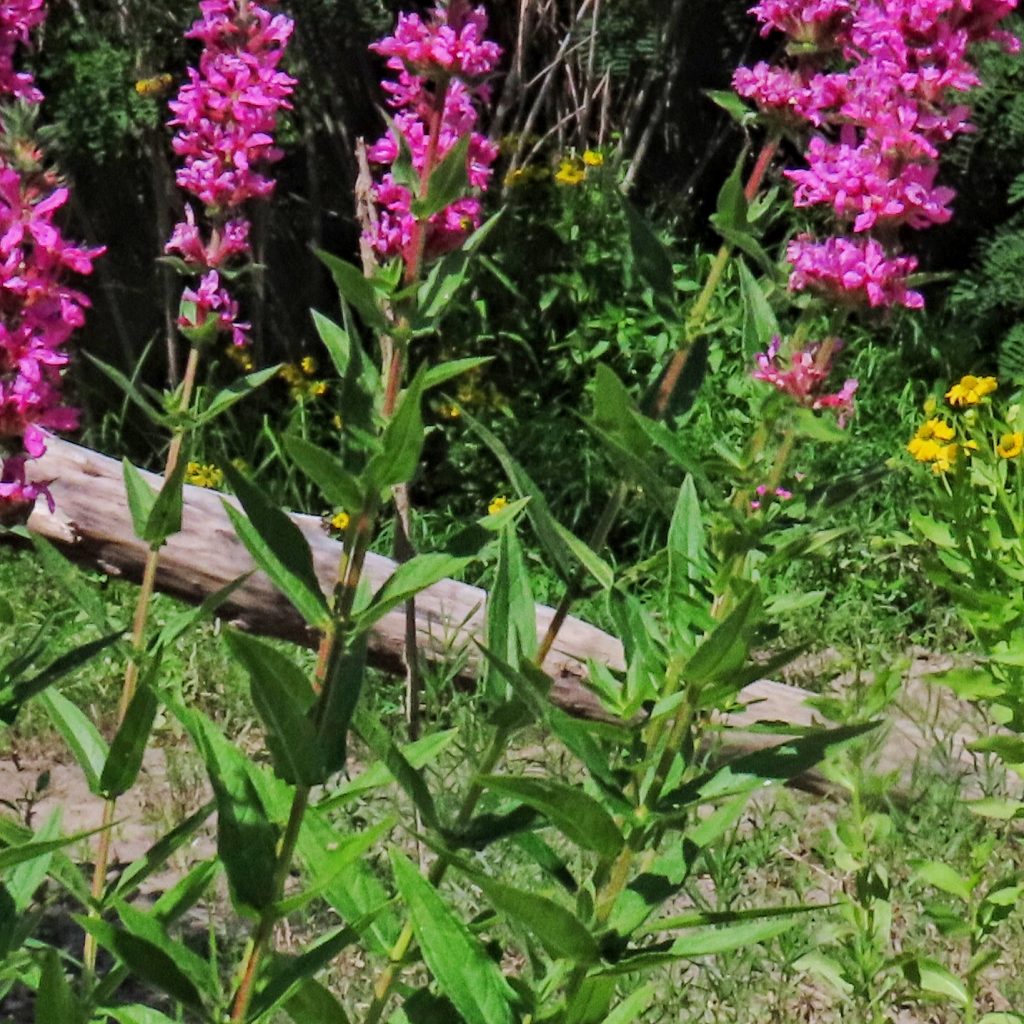
https://www.illinoiswildflowers.info/weeds/plants/pp_loosestrife.htm
https://www.invasiveplantatlas.org/subject.html?sub=3047
https://www.fs.fed.us/database/feis/plants/forb/lytsal/all.html
Size- Up to 6’ tall
Habitat- Wetlands, ditches, wet meadows
Range- Region wide except for alpine areas, and the most arid parts of eastern Oregon
Blooms- All summer
